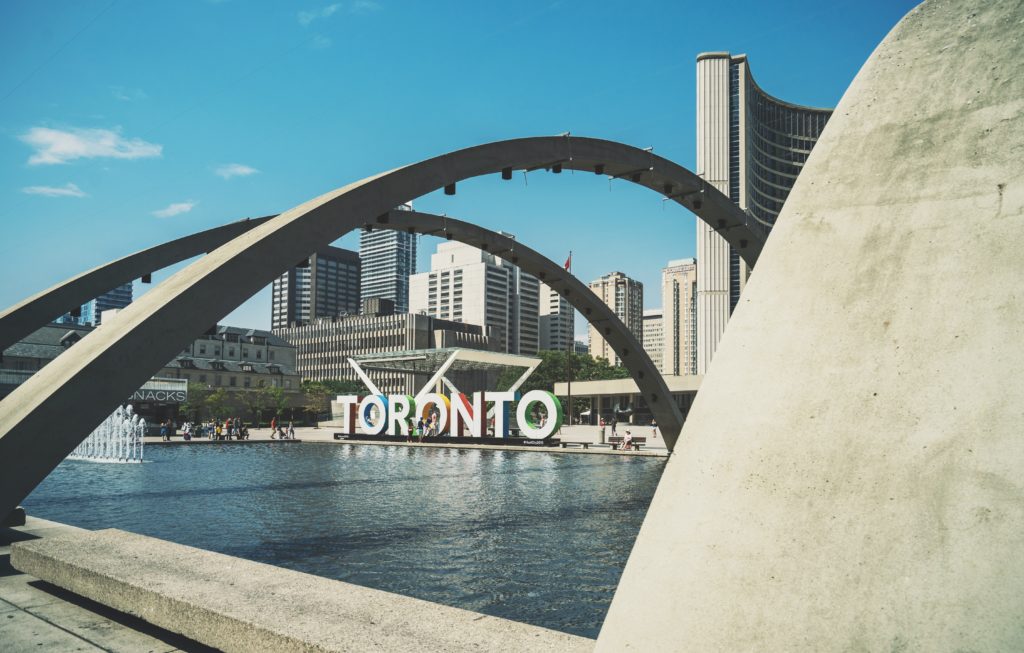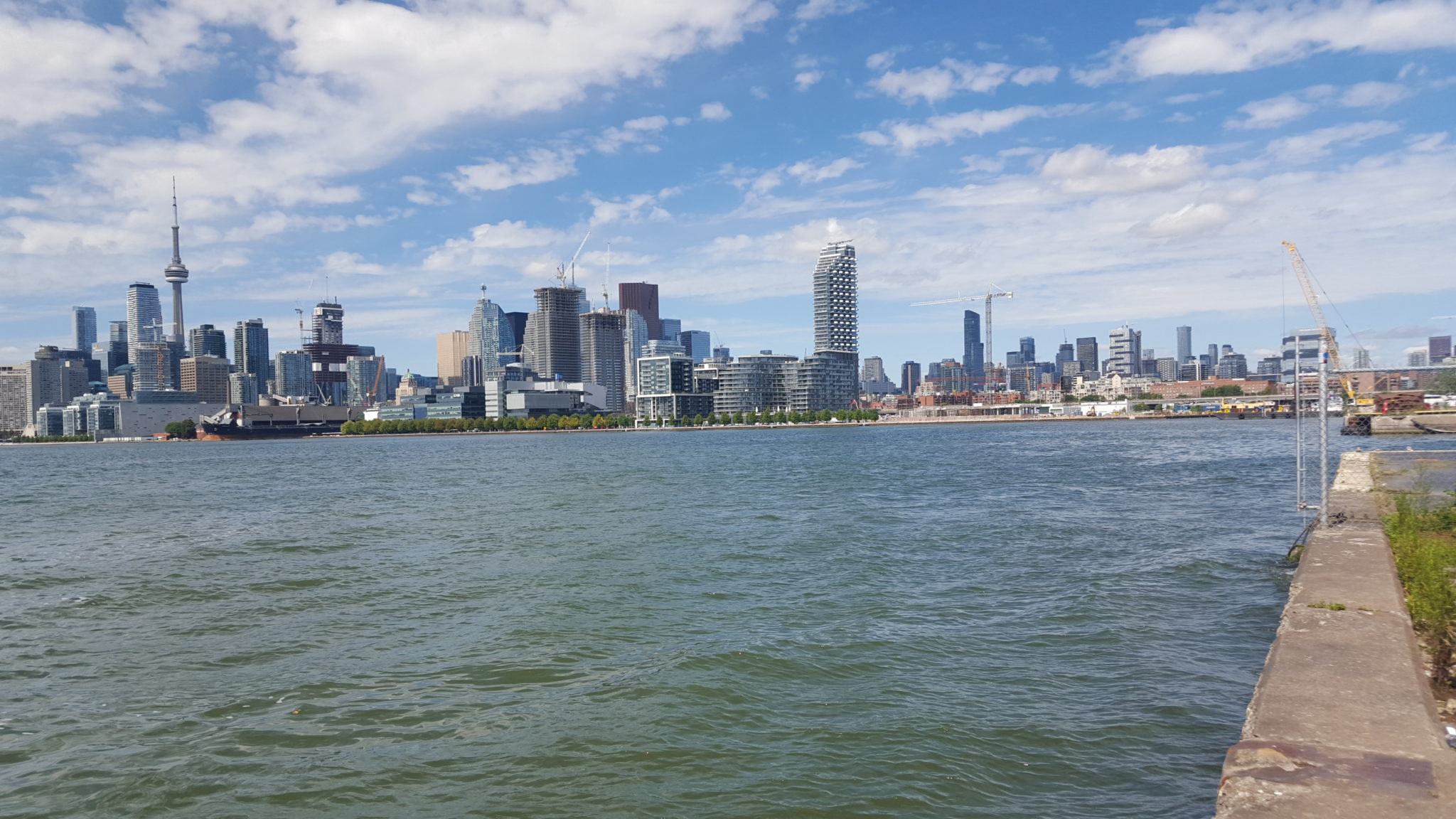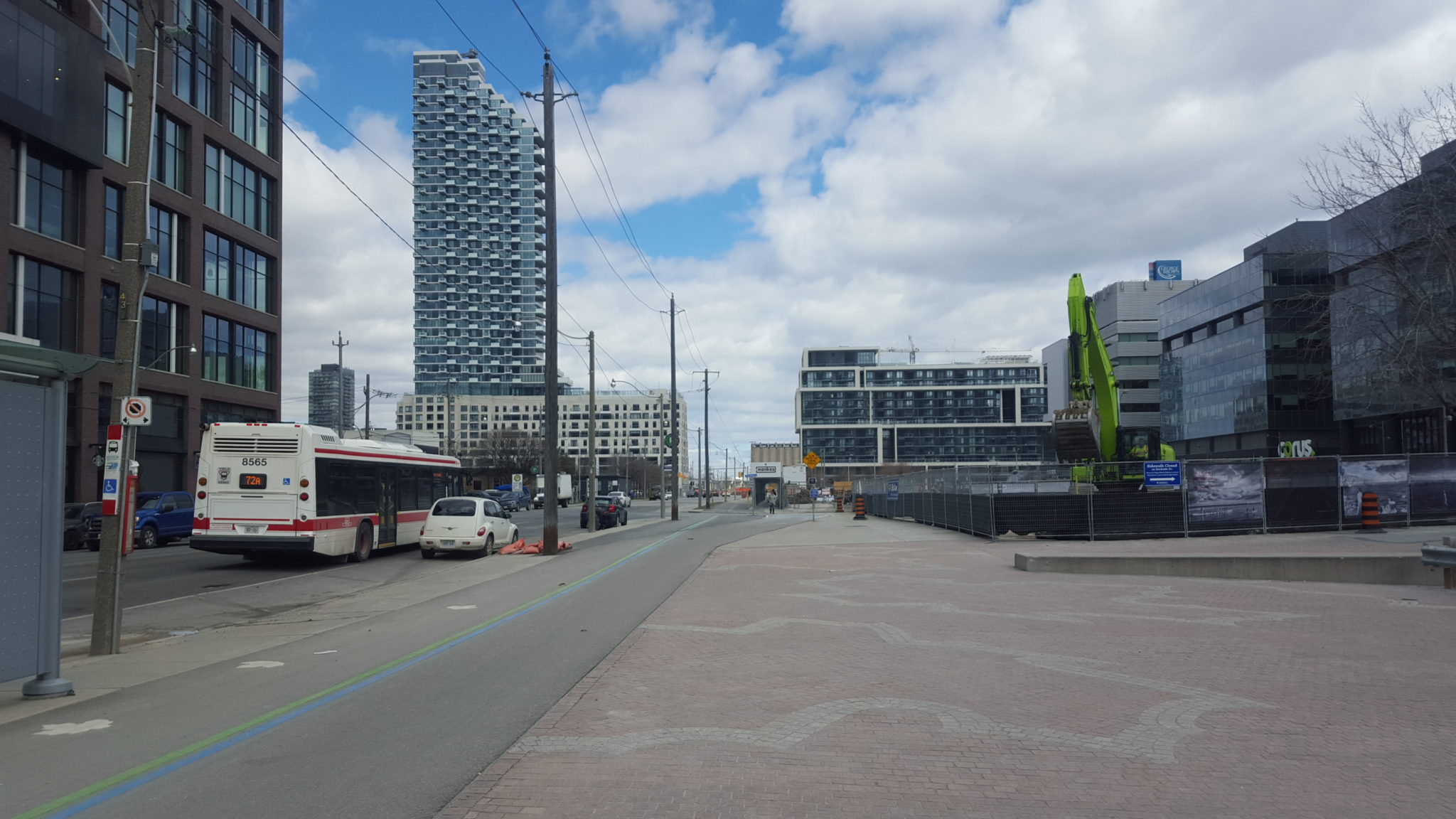Sidewalk Labs closed down – whither Google’s smart city?

DOI reference: 10.1080/13673882.2020.00001070
By Constance Carr (email), Markus Hesse (email), Department of Geography and Spatial Planning, University of Luxembourg
This article was adapted, revised and updated from the original, “Sidewalk Labs is closing down – Lessons from Toronto’s realpolitik” published at Urbanization Unbound, the blogspot of urban geographers at the Department of Geography and Spatial Planning of the University of Luxembourg, edited by Constance Carr and Markus Hesse.
So, earlier this year Alphabet Inc. pulled its daughter company, Sidewalk Labs (sister to Google), out of the Quayside project in Toronto, Canada. Tech giant Alphabet Inc., which runs an annual revenue of over 160 billion (Alphabet Inc. 2019, p. 21) from its “performance advertising and brand advertising” business (ibid., p. 6), claimed that its Moonshot company, Sidewalk Labs, had also fallen victim to the virus. It was a story well carried in times of Corona, stirring fears that if giants can fall, then we must all be doomed. It also demonstrated what underpins corporate urban development. COVID-19 and the associated shutdown caused financial uncertainty that forced Alphabet to reassess its priorities, and check it out: Toronto was not one of them. Perhaps, then, its departure was a blessing in disguise to even its most avid supporters, if Alphabet’s Quayside plans were only ever about “wagering the waterfront” (Carr 2018), and given the fact that the company has a record of abandoning projects half-way through. Its exit was better sooner than later, before construction starts, before lives move in, and before urban socio-spatial (dis-)integration possibly took over.
From an urban studies perspective, what was most striking about this whole saga was the hubris of large digital corporations (LDCs) when it comes to engaging with people, cities and real life. Lorinc (2020) was right when he said that not enough attention had been given to the differences between Toronto and New York City politics: Alphabet apparently believed that if you make deals with big government, local politics will just fall in line. Meanwhile, no one warned them of the idiosyncrasies of urban development in general and of the related nitty-gritty details about land-use development and planning in Toronto in particular. Sidewalk Labs set up shop in a city whose politics they barely understood and land use procedures even less. Meanwhile, the Canadian governments at all levels appeared to have no idea what they were getting into, and seem to have spent much of the last two years scrambling for a happy medium where they could both profit and save face. Let’s not forget that land use policy in Toronto for the past three decades (or more) has been about scaling back public institutions and boosting private profit (Bunce, 2017; Desfor and Laidley 2011). The staggering gap—the complete misunderstanding between the two sides—is probably one of the more important lessons for onlookers.
Figure 1. Toronto’s waterfront. Source: Constance Carr, 2019.

Multi-sided communication deficit
Alphabet’s practice of commodifying data that is the new logics of accumulation often called surveillance capitalism, was a central critique point (Zuboff 2019). It needed, and still needs, constant attention because remarkably few actually understand it. The European Union’s General Data Protection Regulation (GDPR), for example, may protect personal privacy, but it does not protect against surveillance capitalism and platform economics,
“The GDPR’s reach is not exhaustive […] Data processing without compliance is still permitted for matters of state security, justice and military matters,” (Aho and Duffield 2019, p. 18).
These are vague conditions indeed, easily buried in procurement contracts between governments and businesses. Furthermore, according to European Union regulators:
“Companies seem to be treating the GDPR more as a legal puzzle, in order to preserve their own way of doing things … rather than adapting their way of working to better protect the interests of those who use their services” (EDPS, 2019, p. 5 quoted in Aho and Duffield, 2019 p. 19).
And finally, practices of lethargic enforcement of the GDPR among host country data controllers is raising concerns about regulatory capture and the potential race among EU states to host company headquarters and assume this lucrative role (ibid.). In Toronto, Jim Balsillie, Shoshana Zuboff, Roger McNamee, and a number of residents, scholars, community groups and smaller tech firms (collectively known as #Blocksidewalk) loudly slashed the project for its failure to address data protection and public interest. The fight was also taken up by the Canadian Civil Liberties association that filed a law suit against all three levels of Canadian government for failing to protect its citizens.
In this context, it is important to note that Alphabet Inc. is hardly the only company that can push forward this extractive business model. Governments and legal teams are equally capable of generating the necessary jurisdictions and profiting as well. Artyushina’s (2020) review of the new European data strategy in MIT Technology Review, makes precisely this point. With the European Commission’s (EC) (2020) data governance strategy,
“…the EU will become an active player in facilitating the use and monetization of its citizens’ personal data. […] This new strategy represents a radical shift in the EU’s focus, from protecting individual privacy to promoting data sharing as a civic duty. Specifically, it will create a pan-European market for personal data through a mechanism called a data trust. […] The EU’s new plan considers personal data to be a key asset for Europe […] The Trusts Project […] will set up a pan-European pool of personal and non-personal information that should become a one-stop shop for businesses and governments looking to access citizen’s information” (Artyushina 2020).
This is still a relatively under-researched area, but it begins with understanding a range of issues about intellectual property, anti-trust law, the practices of corporate law, and how monopolies can exacerbate power distances. Further researchers looking into this include Barns (2020), Haggart et al. (2020), Johns (2020), and Edwards et al. (2020).
There is thus (at least) a three-way communication deficit, opening questions that are still not answered: What are, in fact, the arrangements being made between governments and big business? What do these agreements look like and how does each side understand their role? What asymmetries and incongruences exist alone therein? Also, what modes of communication are happening at the urban planning level? How deep and thorough are these conversations? The saga at Quayside exposed these issues; and there is work to do figuring it all out. Bridging this gap, for example, was a recurring topic in a recent post-Sidewalk webinar, entitled “After Sidewalk, what is the future of smart tech for Canadian cities?” hosted by the Canadian Urban Institute. Further path breaking events addressing this topic can be found at the Centre for International Governance Innovation.
Figure 2. The headquarters of Sidewalk Labs that has closed down. Source: Constance Carr, 2019.

Sidewalk down, but Alphabet not out
Sidewalk left the project, and it did so accompanied by weak, sloppy and patronizing public communications (see Google’s Dan Doctoroff’s swan song, and the empty-signifier good-bye letter from Waterfront Toronto (WT), the agency in charge of property development along the lakeside) that left many wondering what the real reason was: Did Alphabet tire of public political campaigning? Or do they have bigger fish to fry in New York? For sure, we will be keeping an eye on the NYC mayoral elections in 2021. Meanwhile statements from the City, the Province, and from Ottawa are still outstanding. We are not alone in noticing this (Valverde 2020). Surely there are different reasons in each case, but the outcome is the same: silence. As researchers, we sincerely hope that they will open up for comment. This marks a real contrast to the allegedly communicative appeal with which Sidewalk Lab at Toronto Waterfront had once started.
But the decibel of Sidewalk Lab’s departure drowned out news of other matters unfolding a little more quietly. Thanks to a note from Mariana Valverde on our blog at Urbanization Unbound, we learned that while Sidewalk Labs was closing operations, Alphabet’s Sidewalk Infrastructure Partners (SIP) was quietly moving forward. It is not immediately clear what the objectives of SIP are beyond testing miscellaneous infrastructure technologies, such as autonomous vehicle corridors in Michigan, robots and the circular economy, or—under the pretence that it is necessary because of COVID (SIP 2020)—machine learning in the shipping industry (SIP and Innovation Endeavours 2020). This practice is not really a whole lot different from Sidewalk Labs that also ultimately produced a mere grab bag of technologies that might be useful. What is clear, however, is that is funded by the Ontario Teachers’ Pension Plan (OTPP), which is one of its partners.
SIP (2020) has no shortage of marketing pitches about the merits and convenience of the partnership. It is worth, however, understanding the OTPP. Far from being the name of an investment portfolio sitting on someone’s desk, it is an international agency headquartered in Toronto aiming to invest in economic development and infrastructure projects whose returns then serve both retirees and the company’s own private growth. OTPP (2020) is Canada’s largest single-profession pension plan with net assets worth Can$207.4bn as of December 31st 2019 (remember the date) with an annual return of 10.4% since the fund was started in 1990. It has further offices in London, Hong Kong, and, since August 31st, Singapore as well (Gournis 2020).
Around Canada, the OTPP owns at least 50% of 20 shopping malls, 11 office towers, the Ritz Carlton Hotel in Toronto, and 100% of Toronto’s “East Harbour Lands” (OTPP 2020a). Somewhat surprised by the ownership of lands neighbouring the former site of Sidewalk Labs, we dug a little further, and discovered a number of reports in the media about how the real estate developer, First Gulf, had sold the East Harbour project involving 38 Acres of land to Cadillac Fairview Corporation Limited in September 2019 (Bloomberg 2019; McFarland 2019). It might be noted that this is the same piece of land that was proposed as a site for the Amazon HQ2 (Wong 2018), and that this land also falls within WT’s jurisdiction. Cadillac Fairview is a real estate managing company wholly owned by OTPP (2020).
OTPP (2020) also has a broad portfolio in international infrastructures and LDCs. It owns Bristol Airport outright and has shared ownership of London City Airport, Birmingham Airport, Brussels Airport, (OTPP 2020) It also has 8.5 million shares in Alibaba Group Holding Limited (worth $532.8m), 3.8 million shares in Samsung Electronics ($235.4m), 0.1 million shares in Amazon ($243.7$m), and 0.2 million shares (worth Can$399.3m) in Alphabet Inc.
It is, of course, difficult to know what all this means precisely, and how it relates to the departure of SL. Certainly, first, OTPP’s stake in Alphabet Inc. and the waterfront predates SL’s departure. Second, OTPP will also retain a stake of the waterfront development through Cadillac Fairview at East Harbour. And, conversely, Alphabet Inc. will still be involved in the waterfront via its partnership with OTPP. Third, WT will stay involved.
It is conclusive that SL will have little presence left at “The 307”, which served as their local headquarters. There are reports that it has laid off a significant number of staff in Toronto (Wong 2020) and the Sidewalk Toronto’s website is now defunct. On the face of it, it appears that Sidewalk Labs continues to operate out of New York. In our research, “Digital Urbanism and the Challenge of Urban Governance” (Carr and Hesse 2019) performed in co-operation with York University’s CITY Institute, we expanded on the work of scholars such as Desfor and Laidley (2011), Bunce (2017), Lehrer et al. (2010), and Lehrer and Wieditz (2009) who observed the waterfront both as a site of central political economic importance for the city and nation, as well as a site of gentrification and private market-led development. Empirical evidence from our research (2020) further found that developing the waterfront as an international hub of state-of-the-art digital and technological development was a key framework for the eastern harbour properties. Despite SL’s departure, this is continuing. Menkes Developments Ltd, in co-operation with TD Asset Management Inc., has just celebrated the “topping off” of its Waterfront Innovation Centre. Among its future occupants will be the Toronto Region Board Trade, one of the more outspoken pro-Sidewalk voices throughout the controversy. A trajectory of further research could be an examination of the institutional networks that comprise this urban development trajectory.
Figure 3. A street view of the of the area where the Waterfront Innovation Centre is currently being built. Source: Constance Carr, 2019.

Preliminary conclusions
While the Sidewalk story is neither complete nor thoroughly understood, there are general lessons to be learned for other cases where LDCs try entering the field of urban development: It is still necessary to seek out the blind spots. It is still largely unclear what needs to be known, or can be expected, when LDCs go for the urban without knowing how cities actually ‘work’ but are committed to their own interests in maximising power and profit. Walker’s (2018) account of the long-term transformation of San Francisco and the Bay Area under the siege of the digital economy has demonstrated what happens when even an informed community of politically sensitive citizens fall victim to what is neatly framed as “cultural-cognitive” capitalism. Maybe New York City can also contribute to this debate, as it was not so long ago that Amazon.com was forced to retreat from its plans for a second headquarters on Long Island. Comparable to the case of Sidewalk, this departure was also the result of heavy public disputes over the deal that was initially, and rather secretly, made between political elites and the corporation, while the flip sides of this development remained unclear and untold to the public.
It is precisely this political dimension of tech-cities and tech-investments in urban development that needs a better understanding and critical reflection. When big-tech is going urban, for example by promising to make cities ‘smart’, this can never be reduced to the apparently neutral technology of efficient or sustainable urbanism. It is also a societal and political process, and selling this as simply a matter of technology that would make everybody happy is post-political. This was one of the conclusions that we made after our exploration of the supposedly “smart” digital city that Sidewalk Labs wanted to build:
“While Toronto’s waterfront development as a hub in technological innovation is unfolding as an exercise of politics, perhaps there is a glimmer of realpolitik, as [advocacy] groups filled the discursive void by raising pointed concerns that were left unaddressed,” (Carr and Hesse 2020, p. 79).
Perhaps this is the message that Sidewalk’s clash with the urban planning reality also tells us: A battle between LDCs and civil society can in fact mark a return to the political that cannot, and should not, be simply ‘written off’ (ibid.). Such a return, however, requires that the city in general and the public institutions in particular play a much greater, pro-active role than was the case in Toronto. This remains the most striking political issue that we learn from the whole mess around Sidewalk-Labs: The city and the local council were all but absent from the public controversy, leaving the process over to WT as the developer and Sidewalk as investor and facilitator. What was actually the city’s stake and its goal in this process? Also given the secretive deal-making at the federal government’s top level (Carr and Hesse 2020), was it a good idea, in the interest of the commons, to hand over all power to WT? As long as we are not talking about the introduction of smart metres or more energy-efficient lighting systems, but about the development of entire new neighbourhoods, this should not be left over to the private corporation, but handled by the city’s political bodies and supported by an active civil society.
Last but not least, Alphabet Inc. used COVID-19 as an explanation for its retreat, which was not fully convincing in the light of the political battles and communication dilemmas that accompanied Sidewalk’s attempt to land themselves there. However, the pandemic bears potential for a sustaining impact on tech-cities, their inclination to cluster at hot-spots of the creative milieus and the related imprint on urban development, housing and social equity. In a recent paper, Sharon Zukin (2020) demonstrated what can happen to the spatial fix of the digital economy in the case of New York City, using evidence from cases such as Amazon’s HQ2 and AirBnB. Rather than dismantling the regular population and all normal life from these hot spots, the longer-term consequences of COVID-19 could also contribute to an erosion of the tech ecosystem that LDCs usually depend on. As of yet, we don’t know whether the pandemic will be a game changer or a temporary phenomenon, trigger a new normal or vanish and make space for a return of the LDC and urban growth coalitions. While some LDCs have certainly made huge gains from the pandemic (Amazon.com being the most obvious case), others like AirBnB have lost a lot. In any case, again, it’s the political stupid. A more balanced development would require a strong role of a government that is committed to all, not just big-tech capital. Or in the words of Sharon Zukin (2020, p. 27), it “demands a mayor and a city council united behind a muscular strategy of economic development, environmental adaptation and business regulation that no one has yet imagined.”
References
Aho, B. and Duffield, R. (2020). Beyond surveillance capitalism: Privacy, regulation and big data in Europe and China. Economy and Society, 1-26.
Artyushina, A. (2020). The EU is launching a market for personal data. Here’s what that means for privacy. MIT Technology Review, August 11, 2020.
Alphabet Inc. (2019). Annual Report Pursuant to Section 13 or 15(d) of the Securities Exchange Act of 1934.
Barns, S. (2020). Platform Urbanism. Singapore: Palgrave Macmillan.
Bloomberg (2019). Cadillac Fairview purchases East Harbour Project from First Gulf. September 13, 2019.
Bunce, S. (2017). Sustainability Policy, Planning and Gentrification in Cities, Routledge
Carr, C. (2018). Wagering the waterfront? Angling the abc & xyz of Quayside Toronto.
Carr, C. and Hesse, M. (2019). Digital Urbanism and the Challenge of Urban Governance (DIG_URBGOV) – Short Research Summary.
Carr, C. and Hesse, M. (2020). When Alphabet Inc. plans Toronto’s Waterfront: New post-political modes of urban governance. Urban Planning, 5(1), 69-83.
Desfor, G. and Laidley, J. (2011). Reshaping Toronto’s Waterfront. University of Toronto Press.
Edwards, L., Schafer, B. and Harbinja, E. (2020). Future Law – Emerging Technology, Regulation and Ethics. Edinburgh: Edinburgh University Press.
European Commission (EC) (2020). Communication from the Commission to the European Parliament, the Council, the European Economic and Social Committee and the Committee of the Regions.
Gournis, K. (2020). OTPP heads to Singapore with OMERS’ infra exec in tow. Infrastructure Investor.
Haggart, B., Henne, K. and Tusikov, N. (2020). Information, Technology and Control in a Changing World – Understanding Power Structures in the 21st Century. Cham: Palgrave Macmillan.
Johns, F. (forthcoming 2020). ‘Surveillance Capitalism’ and the Angst of the Petit Sovereign. British Journal of Sociology, 1-3. UNSW Law Research Paper No. 20-42.
Lehrer, U. and Wieditz, T. (2009). Condominium development and gentrification: The relationship between policies, building activities and socio-economic development in Toronto. Canadian Journal of Urban Research, 18(1), 82–103.
Lehrer, U., Keil, R. and Kipfer, S. (2010). Reurbanization in Toronto: Condominium boom and social housing revitalization. disP—The Planning Review, 46(180), 81–90.
Lorinc, J. (2020). Sidewalk Labs steps away from Toronto waterfront. Spacing Toronto.
McFarland, J. (2019). Cadillac Fairview to buy east-side Toronto development site from First Gulf, September 13, 2019.
OTPP (2020). 2019 Annual Report – We Lead We Lean We Last.
SIP (2020). https://www.sidewalkinfra.com/collaboration/
SIP and Innovation Endeavors (2020). Accelerating Global Supply Chain Innovation.
Valverde, M. (2020). What’s up with Waterfront Toronto? Why the silence from City Hall and other governments? Ryerson University Centre for Free Expression.
Walker, R. A. (2019). Pictures of a gone city. Oakland, CA: PM Press.
Wong, N. (2018). Amazon headquarters or not, massive Toronto East Harbour office project seeks funding. Toronto Start, March 1, 2018.
Wong, N. (2020). Alphabet’s Sidewalk Labs Cuts About Half of Toronto Workforce. Bloomberg.
Zuboff, S. (2019). The age of surveillance capitalism. London: Profile Books.
Zukin, S. (2020). Planetary Silicon Valley: Deconstructing New York’s innovation complex. Urban Studies.
About the authors
Constance Carr is a Senior Post-doctoral Researcher at the University of Luxembourg, a Visiting Scholar at the CITY Institute, York University, and Invited Faculty at Sciences Po. Her research focusses on the contradictions of market-led sustainable development practices with respect to infrastructure, digitalisation and corporatization of cities. She has published in Regional Studies, Planning Theory & Practice, European Planning Studies, Journal of Transport Geography, and Environment and Planning C: Politics and Space.
Markus Hesse is a professor of urban studies at the University of Luxembourg, with an academic background in geography and spatial planning. A particular subject of his research interest has been the interplay of spaces and flows (for example in what is called ‘relational cities’), questions of urban and city-regional governance, and also the science-policy interface.